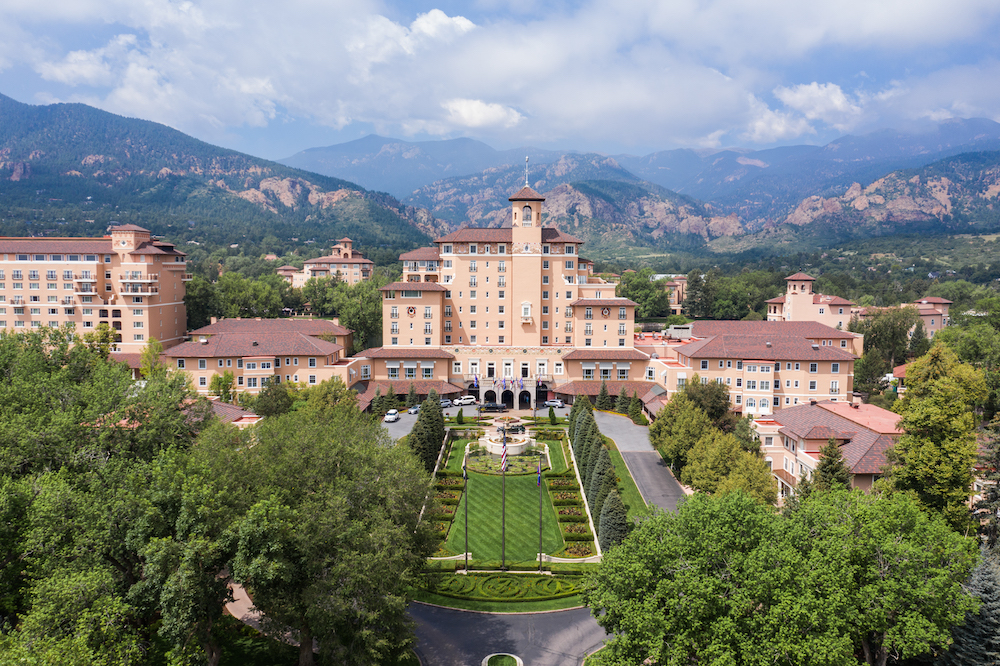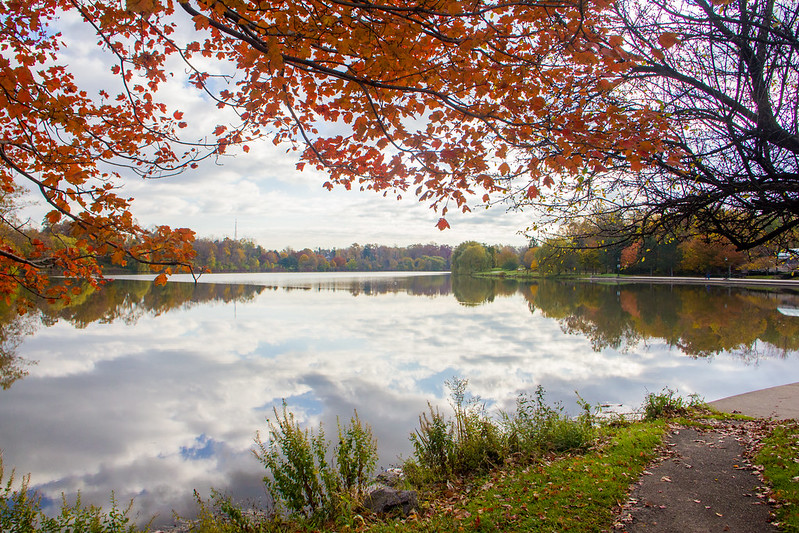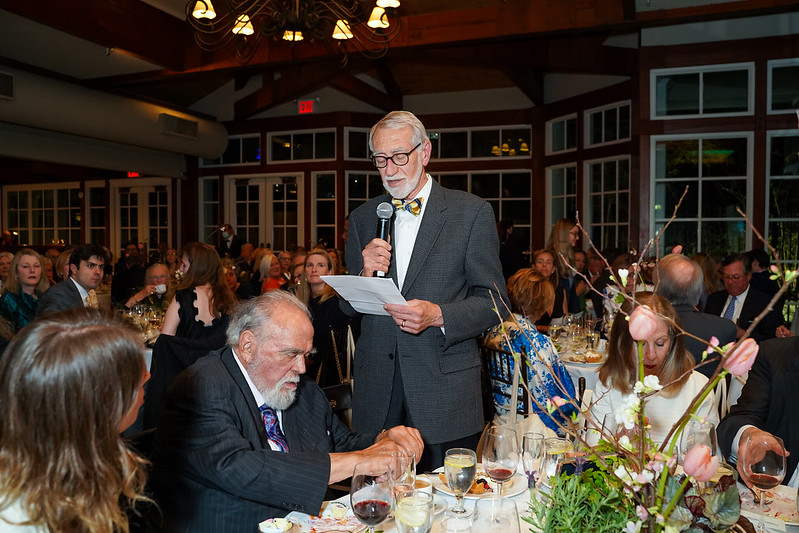
Laurie Olin
Frederick Law Olmsted was truly one of the great figures in American History. The word genius is too often used casually. Olmsted was a true and unique genius. To borrow a phrase from Alexander Pope, he was “the genius of our place”, a vital spirit and intelligence whose actions improved – often transformed – dozens of cities across our continent. In so doing, he planned and designed, he improved and inspired the lives of countless Americans of all social classes. His career was as astounding as the works he envisioned: a farmer, writer, editor, abolitionist— a logistical wonder who organized medical facilities for the Union Army during the civil war as director of the US Sanitary commission, the forerunner of the American Red Cross— a planner and designer for parks, boulevards, colleges, urban systems, gardens, estates, and communities large and small, from coast to coast. He extended himself, his insights, and his inspiration as well, through his sons and office in the creation of state parks and our national park system, along with the creation of a profession— Landscape Architecture— to carry out this important work for the next century.
We celebrate the birth of this brilliant son of America two hundred years ago, who began life in the agricultural and mercantile world of the Connecticut Valley and went to spend days, months, and years working with laborers, professionals, politicians, intellectuals, journalists, generals, and industrialists on an extraordinary range of projects from the design of Central and Prospect parks in New York and dozens more, to diverse campuses across the country in tune with their geographic setting such as Stanford University, and to successfully advocate the preservation of unique and precious landscapes and wilderness from Niagara Falls to Yosemite Valley. Olmsted was a teacher by example without appointment or portfolio to a generation of civic reform leaders and design professionals, the onetime editor of Emerson and Thoreau and a persuasive writer himself, he was the contemporary and peer of Abraham Lincoln, Walt Whitman, Charles Darwin, Karl Marx, Margaret Fuller, John Muir, Harriet Beecher Stowe, Stanford White, and Ulysses S. Grant. He worked tirelessly as a landscape planner and designer for over forty years for the wellbeing of others. We are all his beneficiaries.
So, Happy Birthday, Mr. Olmsted! We’ve gotten your message about how much more is needed to improve the lives of every citizen and to make our cities and planet thrive. We have our work cut out for us. Thanks for showing us the way.
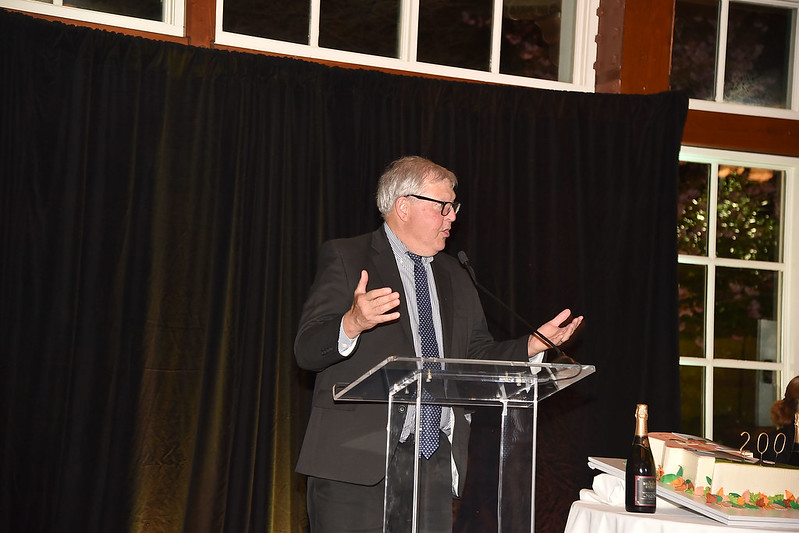
Mike Messner
We all come to know and appreciate Frederick Law Olmsted in different ways.
For me, it was 2008, 2009, and I was in NYC managing an investment fund, when the real estate crisis hit. I had an awakening, as it were, as the real estate bubble was bursting, and the result— our whole family became advocates of urban parks.
As part of our journey, we dove into the history of urban parks and learned about Frederick Law Olmsted. We funded research at Georgia Tech called Redfields to Greenfields, studying the impact of converting underutilized urban real estate to public parks, and supported City Parks Alliance, one of the Olmsted 200 founding partners.
We wanted to share our passion for urban parks, and my daughter Rebecca, a recent graduate of Johns Hopkins— an Olmsted firm designed campus— decided to write and produce “Olmsted and America’s Urban Parks,” shown on PBS on Earth Day 2010.
Rebecca immersed herself— and the family— in Olmsted’s life. She interviewed and met Olmsted scholars and stewards. It won’t come as a surprise amongst this group here tonight, when my daughter came back to me and said, “Dad, I am not sure I can do this. OLMSTED FANS ARE INTENSE.”
I told Rebecca, just tell his story.
And, what a story. Olmsted was a giant in developing the United States in the 19th Century. He documented the failures of the South for the NY Times and helped save the union during the civil war by leading the US Sanitary Commission— now the Red Cross.
He inspired the development of the National Park Service. He led the movement to design green, open spaces where people could escape city pressures, creating places that nourished body and spirit. Olmsted saw parks as fundamental to a flourishing democracy. Places where people of all backgrounds could gather and enjoy the environment and each other.
His work touched the entire country, with parks, entire communities and college campuses designed by his firm until the 1970’s.
The works of Olmsted are now being protected and enhanced by an extraordinary group of park advocates, led by the National Association for Olmsted Parks. Dede Petri, the NAOP President, and her staff have done a wonderful job bringing together a dynamic coalition to highlight Olmsted’s legacy and they’re hosting events throughout the country for the 200th Birthday year, highlighted by the birthday gala tonight. Thank you, Dede!
And, what is most encouraging now, is Olmsted’s ideals are being reignited throughout the country. Older Olmsted cities like NYC, Boston, and newer cities like Atlanta, Houston, Denver, and Miami are prioritizing urban parks and green spaces.
And, while I am optimistic about the future of the urban park movement, it will take all of us to continue our efforts educating— telling the Olmsted story— to ensure that Olmsted and the parks he designed will be celebrated like this on his 250th birthday in 2072.
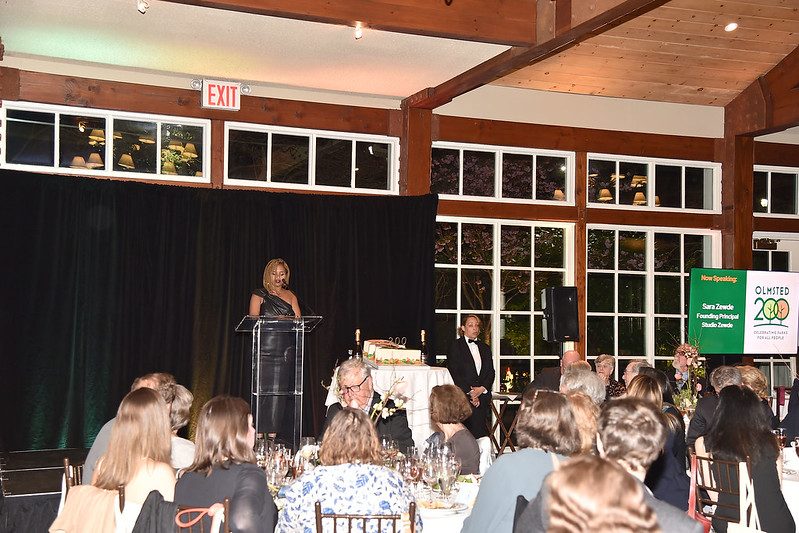
Sara Zewde
In 1852, the paper known then known as the New York Daily Times commissioned a young, 30-year-old Frederick Law Olmsted to conduct an immersive research journey through the Southern slave states to write about the conditions of slavery. This 14-month journey through the South would become a centerpiece of Olmsted’s inspiration, methods, and legacy as a landscape architect and to the landscapes across America that we celebrate today.
Olmsted returned from the Slave South in 1854, believing that a staunch re-shaping of civic life in America was the necessary propeller of innovation, of democracy, of arts and culture, environmental sustainability, and economic justice. Necessary for the society to move beyond the ills of slavery. He was convinced that public space could unlock an appreciation for humanity that slavery had otherwise impeded. And so, he took to the practice of shaping it. Three years following his return from the South, Olmsted would join Vaux to submit an entry into the design competition for Central Park. The task in front of Olmsted was never to design a pretty park. Rather, it was to design a piece of the civilization he sought for America to be.
In 2019, I re-traced Olmsted’s steps through the south, 165 years later. I departed, just as he, “from Washington to Richmond, across the James River plantations, Savannah, Montgomery, Mobile, the Mexican Gulf,…down the Red River…taking the route across East Texas.” What I found was that the social, economic, and environmental challenges that originally motivated Olmsted to embark on this legacy stubbornly persist today.
This occasion tonight, then, is a moment to reflect on the ways in which we are still embarking on the project Olmsted set forth. His legacy points us to a past and future potential for a collective commitment to the spaces that bring us together, in the context of a society designed to keep us apart. Despite being one of the most historicized figures in American history, there remains much more to say about Olmsted’s legacy, 200 years after his birth. And, it may just be this outstanding part of his legacy that galvanizes us as a society to take a bold look at the meaning of our civic life and public spaces today, in view of all we have endured as a nation, and what we have yet to overcome.
I want to thank everyone here for everything you have done to mark this occasion. I hope we can use it to chart forward all we have yet to accomplish of this legacy together.
To watch Sara give her toast, click here.

Hugh Howard
Having spent years researching and writing a book about Olmsted, I came away with one essential insight: He could see the future.
He possessed one of the great minds of the nineteenth century, together with an empathic understanding of the hoi polloi, of the city, of democracy.
When he died, his friend Professor Charles Eliot Norton wrote to Olmsted’s namesake son, known as Rick. “Few men have done better service than he,” Norton wrote, “service beneficent not only to his own generation, but to generation after generation in the long future.”
A great New Yorker, Henry Whitney Bellows — a clergyman and co-founder of Cooper Union — put it another way, requiring just two words: He described our man Olmsted as “long-headed.”
Well, it took a couple of decades for Olmsted to build this wonderful park, and here we are, seven or eight generations later, in a position to appreciate his long-headedness.
Let us, then, as members of that “long future,” renew our commitment to healthy parks for all people as we raise our glasses.
To Mr. Olmsted: Happy birthday, thank you . . . huzzah!









